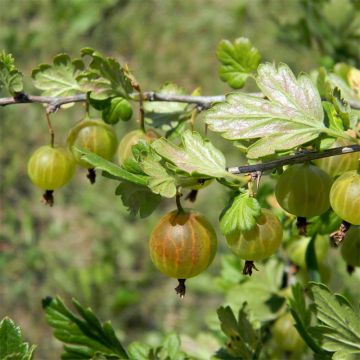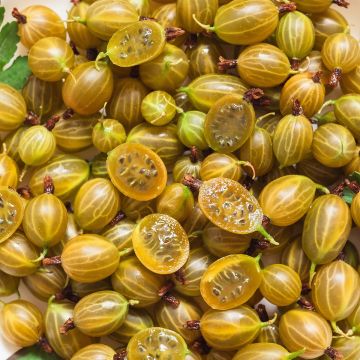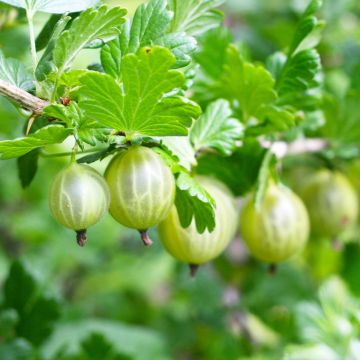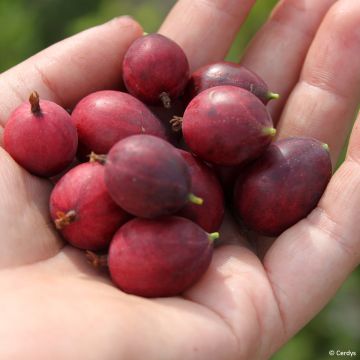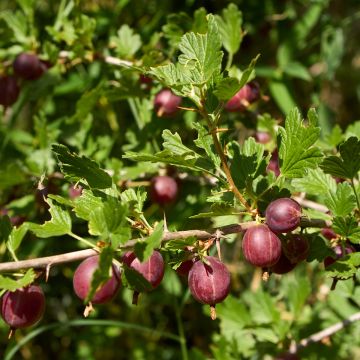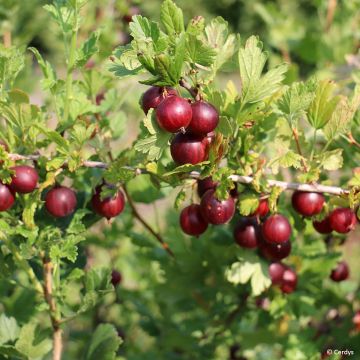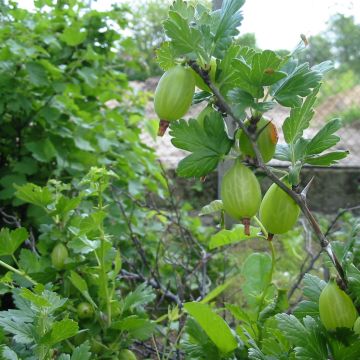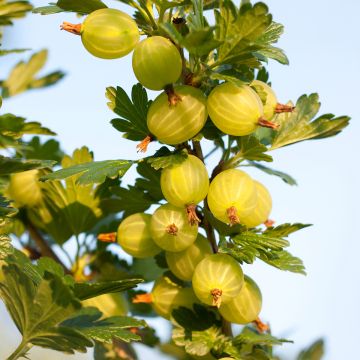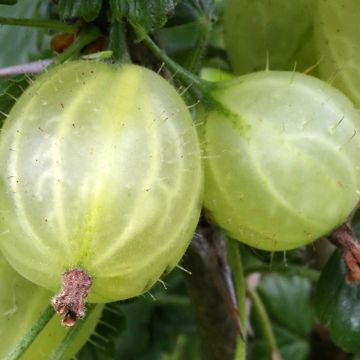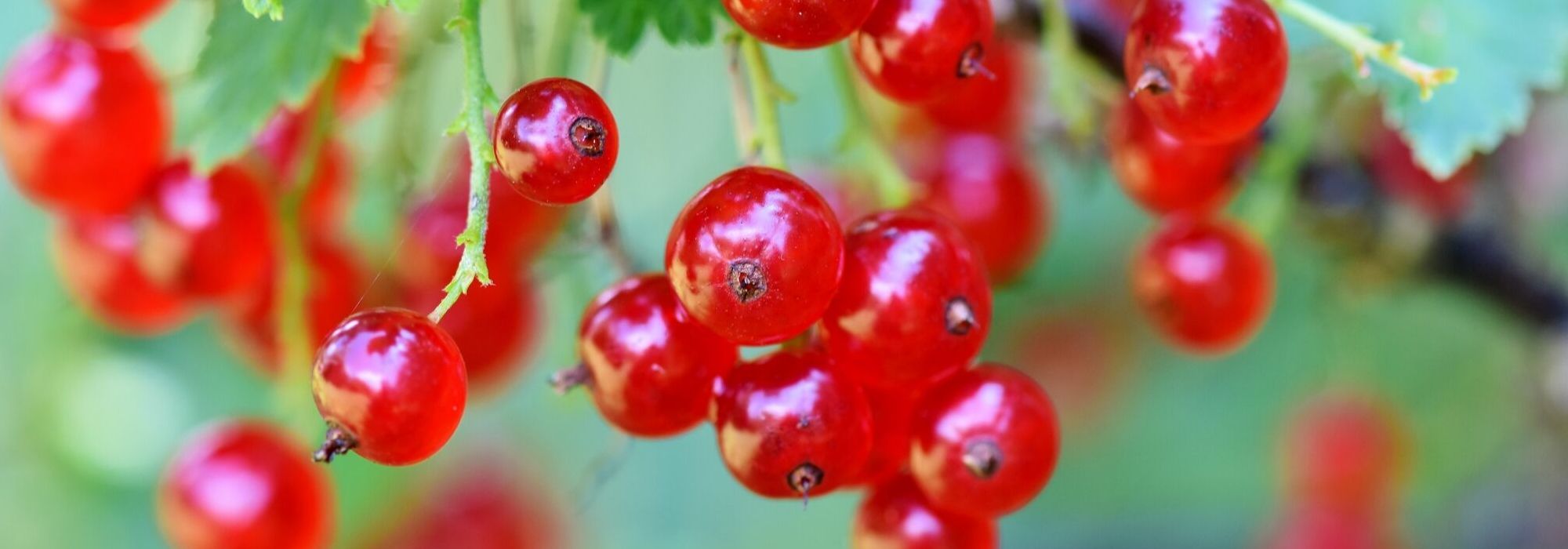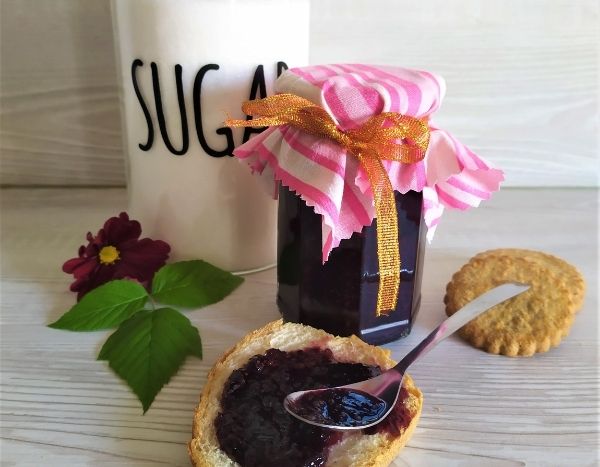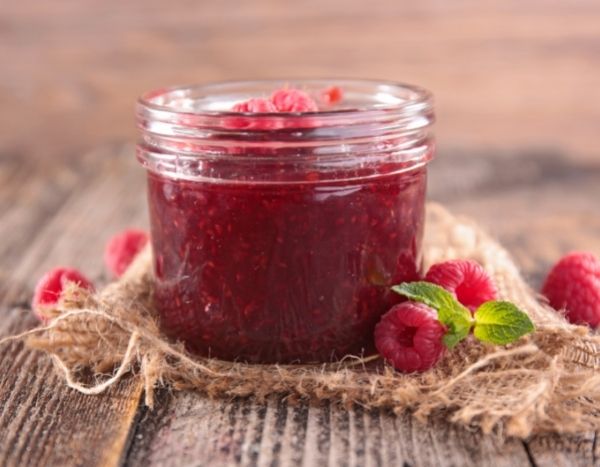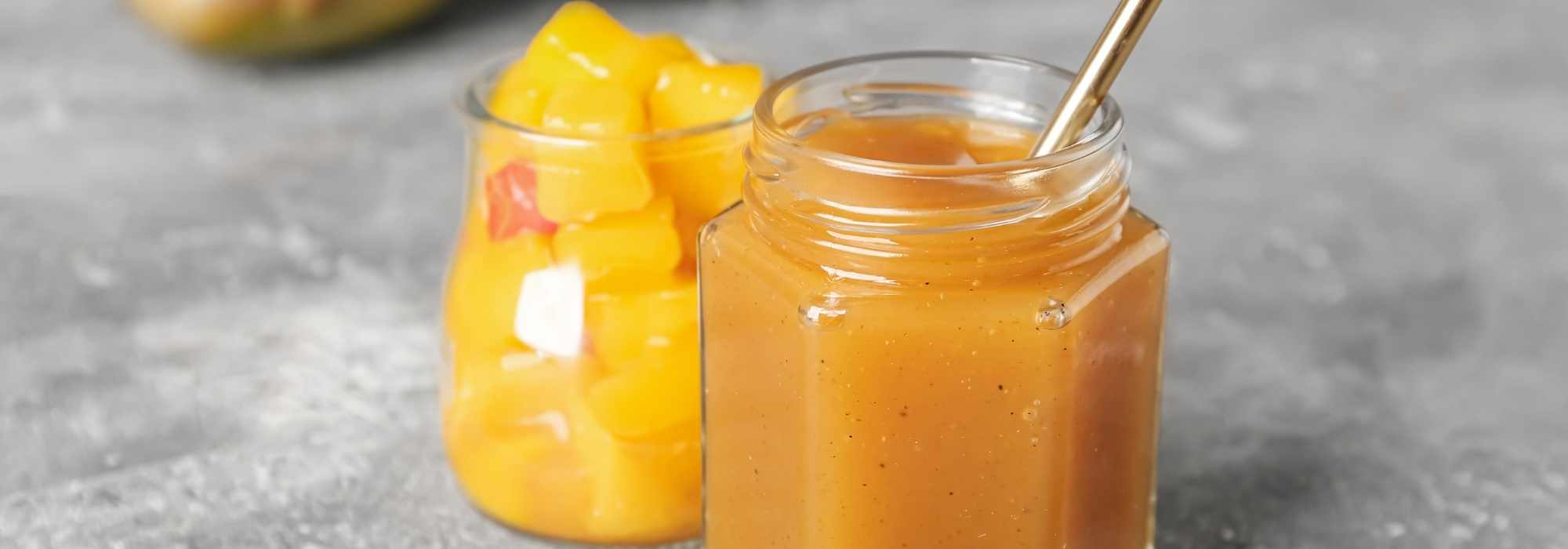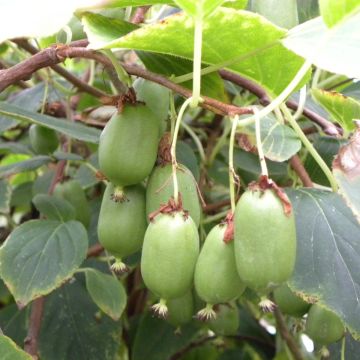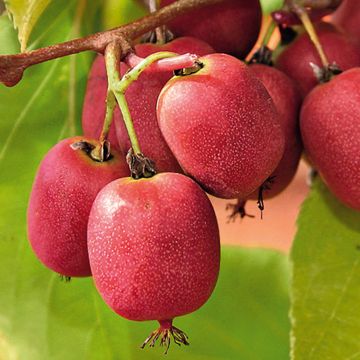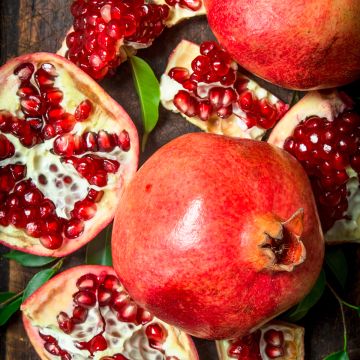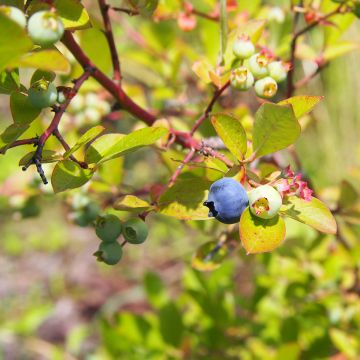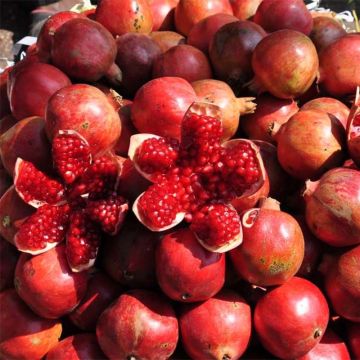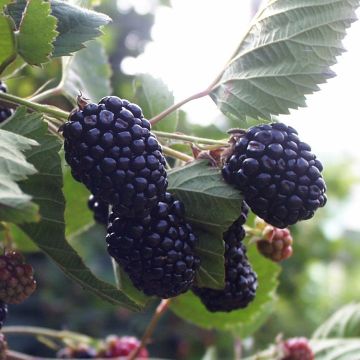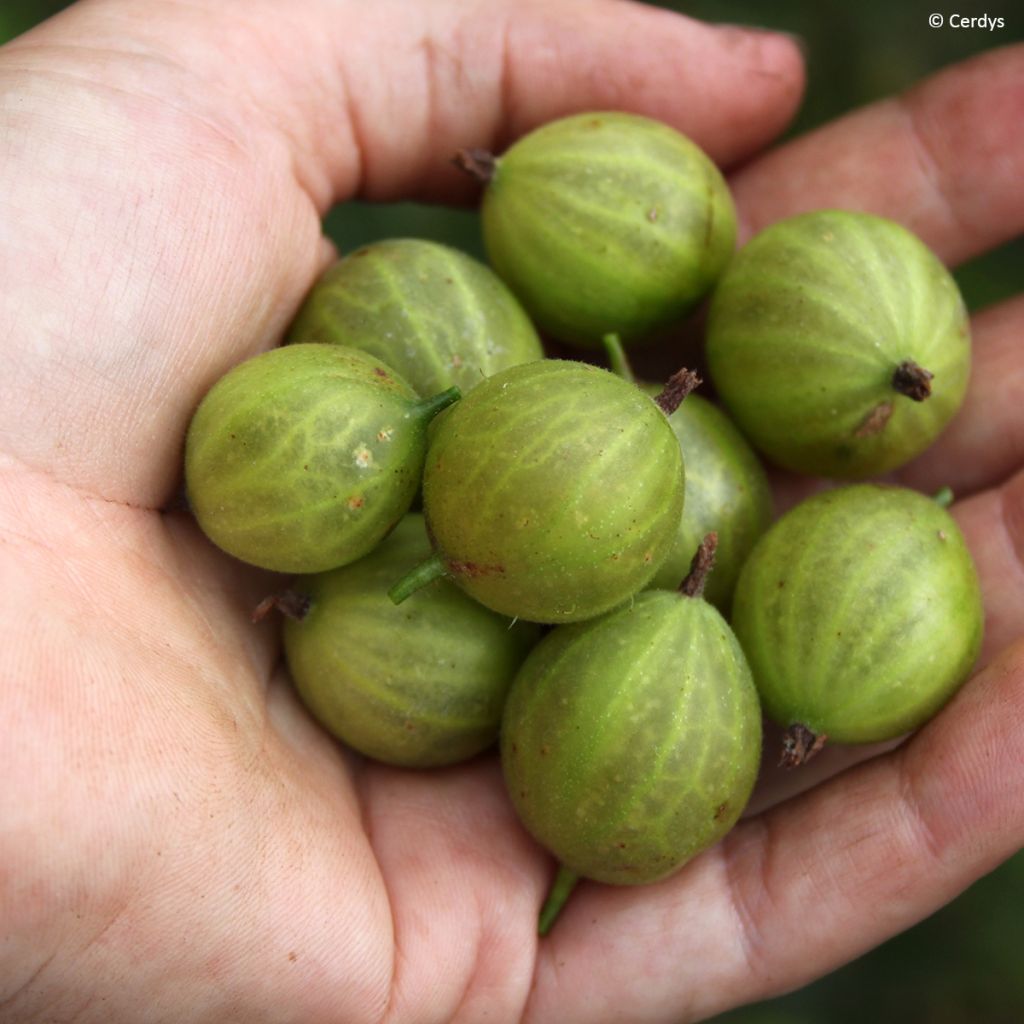

Gooseberry Crispa Greenling
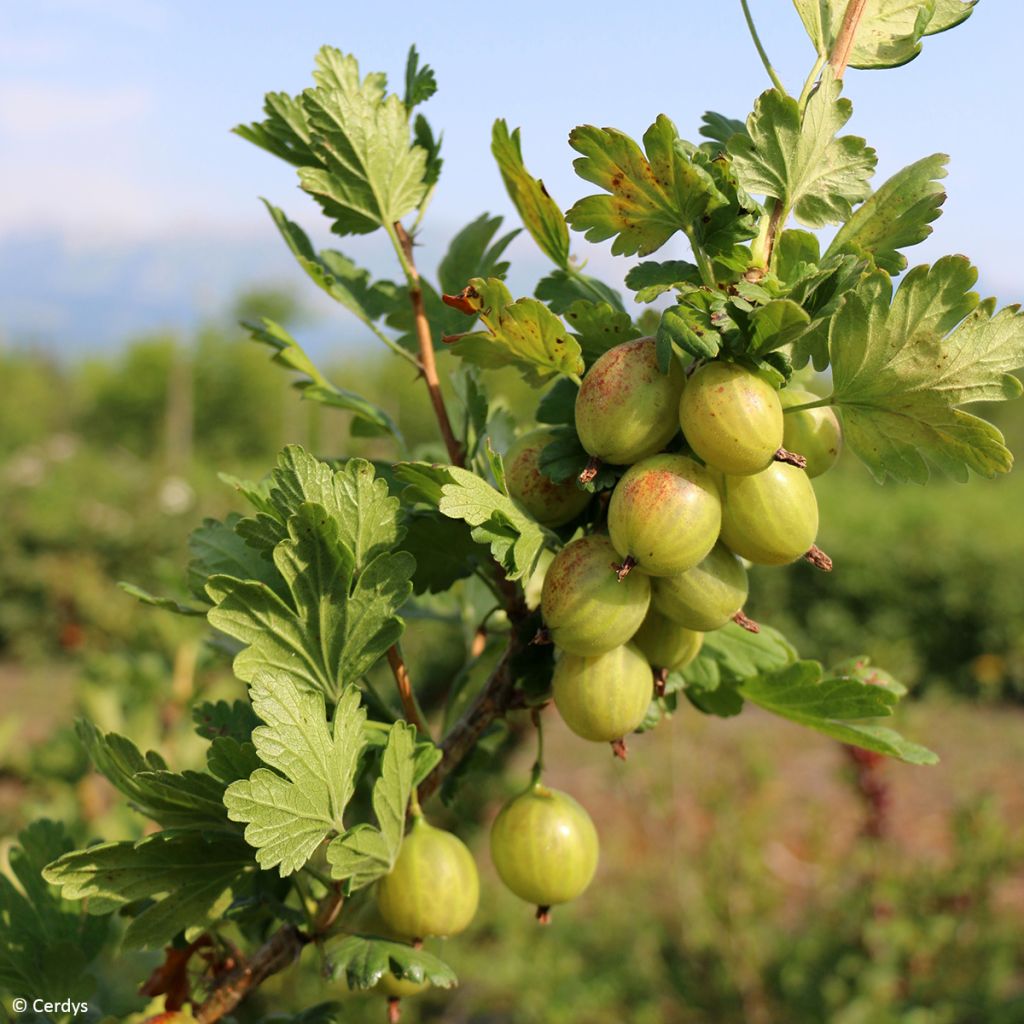

Gooseberry Crispa Greenling
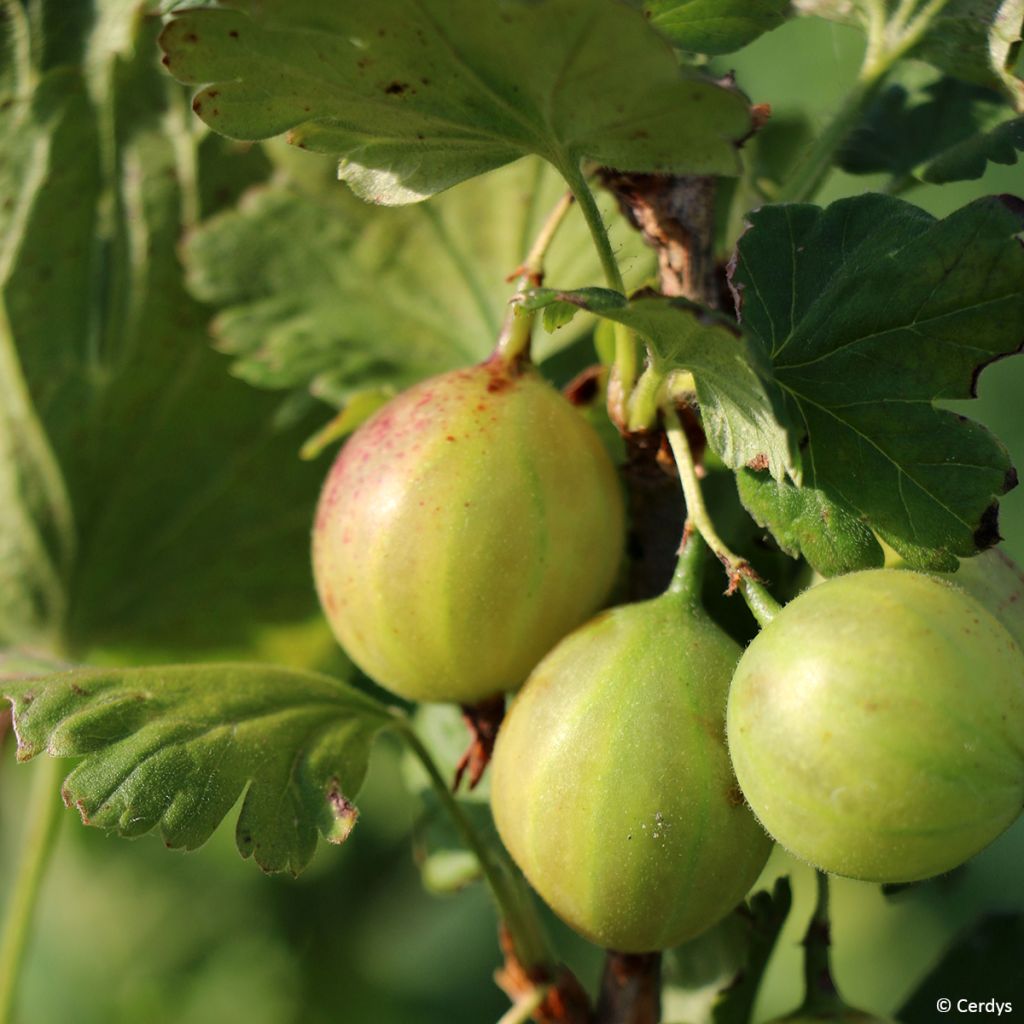

Gooseberry Crispa Greenling
Gooseberry Crispa Greenling
Ribes uva-crispa
Gooseberry
Special offer!
Receive a €20 voucher for any order over €90 (excluding delivery costs, credit notes, and plastic-free options)!
1- Add your favorite plants to your cart.
2- Once you have reached €90, confirm your order (you can even choose the delivery date!).
3- As soon as your order is shipped, you will receive an email containing your voucher code, valid for 3 months (90 days).
Your voucher is unique and can only be used once, for any order with a minimum value of €20, excluding delivery costs.
Can be combined with other current offers, non-divisible and non-refundable.
Why not try an alternative variety in stock?
View all →This plant carries a 6 months recovery warranty
More information
We guarantee the quality of our plants for a full growing cycle, and will replace at our expense any plant that fails to recover under normal climatic and planting conditions.
Description
The Crispa 'Greenling' Gooseberry Bush produces large green fruits that are juicier than older varieties with green fruits. This recent development is also interesting for its high yield and proven resistance to powdery mildew. This beautiful bush is covered in greenish flowers in April, which are insignificant but attractive to bees and other pollinating insects. Harvesting begins in late June. 'Greenling' fruits are very large and green, have thin and smooth skin, and are deliciously sweet. They can be enjoyed without any problem with the skin. Planting from October to March for a harvest in August.
From the Grossulariaceae family, just like the Redcurrant (Ribes rubrum) and the Blackcurrant (Ribes nigrum), the Gooseberry Bush, in Latin Ribes grossularia var. uva-crispa, is also called Prickly Gooseberry, Curly Grape, Louse-Clapper, Louse-Cruncher, Ball or Vinetier. The Ribes uva-crispa Crispa 'Greenling' is a recent Swiss development from the Crispa range. This range includes high-yield varieties that are disease-resistant. The 'Greenling' variety forms a vigorous and bushy bush with a wide habit that reaches 80 to 100 cm in height and 60 to 100 cm in width. Its green foliage disappears in winter. The greenish spring flowering goes unnoticed except for the insects that come to pollinate it. Harvesting takes place from late June to late July or even mid-August. The fruits are large to very large, green, and glabrous. They can be consumed with the skin. Their pulp is translucent, juicy, sweet, and slightly acidic, containing tiny seeds. They are delicious pearls to nibble on without delay!
The 'Crispa Greenling' Gooseberry Bush is self-fertile, but another variety nearby is always beneficial for production. The picking is done as the fruits ripen. Picked from the bush, its juicy and sweet gooseberries are exquisite to enjoy fresh, in a fruit salad or on a cottage cheese accompanied by muesli. Do not hesitate to plant red and yellow varieties for more colours on your plates. It is also possible to make jellies, jams, syrups, sorbets, or even pies or cakes. These slightly acidic fruits are also suitable for sweet-savoury cuisine to accompany meat or in composed salads.
The gooseberry bush will find its place in the vegetable garden and orchard alongside other small fruit bushes. Alternate species and varieties for better production and indulgence: raspberry bushes, blackcurrant bushes, redcurrant bushes... It can be planted in a low edible hedge, alongside shrubs with original edible fruits such as 'Duet' Honeyberry or the 'Little Helpers' Aronia. If you enjoy gooseberries, vary the colours with 'Lady Late' with red fruits and almost without thorns, and 'Solemio' with golden yellow fruits.
Gooseberry Crispa Greenling in pictures


Plant habit
Fruit
Flowering
Foliage
Botanical data
Ribes
uva-crispa
Grossulariaceae
Gooseberry
Cultivar or hybrid
Other Gooseberry bush
View all →Planting and care
When planting the 'Crispa Greenling' Gooseberry, choose a well-drained and moist soil that is not excessively wet, with a preference for slight acidity. The plant is vulnerable to heat and drought, so it is best to plant it in the sun if you live in cooler regions or partial shade in warmer areas. Also, choose a location that is sheltered from strong winds.
When planting, space the plants 60 to 90 cm apart in all directions, alternating varieties and species. The small fruit family offers many options. To keep the soil cool in summer, mulch it with grass or cut leaves. Additionally, applying organic fertiliser at the start of vegetation will support fruit production and plant health.
In case of attacks from aphids and mites, equip yourself with a sprayer and use soapy water or garlic decoction. To combat fungal diseases, such as anthracnose (brown spots on leaves and fruits), powdery mildew (white powdery coating), grey mould (white then brown coating on berries), and rust (orange pustules on the underside of leaves), regularly spray comfrey or nettle manure or a horsetail decoction. Be sure to remove and burn all diseased parts.
In June-July, protect the harvest with nets to prevent birds from eating the fruits.
Planting period
Intended location
Care
Planting & care advice
This item has not been reviewed yet - be the first to leave a review about it.
Similar products
Haven't found what you were looking for?
Hardiness is the lowest winter temperature a plant can endure without suffering serious damage or even dying. However, hardiness is affected by location (a sheltered area, such as a patio), protection (winter cover) and soil type (hardiness is improved by well-drained soil).

Photo Sharing Terms & Conditions
In order to encourage gardeners to interact and share their experiences, Promesse de fleurs offers various media enabling content to be uploaded onto its Site - in particular via the ‘Photo sharing’ module.
The User agrees to refrain from:
- Posting any content that is illegal, prejudicial, insulting, racist, inciteful to hatred, revisionist, contrary to public decency, that infringes on privacy or on the privacy rights of third parties, in particular the publicity rights of persons and goods, intellectual property rights, or the right to privacy.
- Submitting content on behalf of a third party;
- Impersonate the identity of a third party and/or publish any personal information about a third party;
In general, the User undertakes to refrain from any unethical behaviour.
All Content (in particular text, comments, files, images, photos, videos, creative works, etc.), which may be subject to property or intellectual property rights, image or other private rights, shall remain the property of the User, subject to the limited rights granted by the terms of the licence granted by Promesse de fleurs as stated below. Users are at liberty to publish or not to publish such Content on the Site, notably via the ‘Photo Sharing’ facility, and accept that this Content shall be made public and freely accessible, notably on the Internet.
Users further acknowledge, undertake to have ,and guarantee that they hold all necessary rights and permissions to publish such material on the Site, in particular with regard to the legislation in force pertaining to any privacy, property, intellectual property, image, or contractual rights, or rights of any other nature. By publishing such Content on the Site, Users acknowledge accepting full liability as publishers of the Content within the meaning of the law, and grant Promesse de fleurs, free of charge, an inclusive, worldwide licence for the said Content for the entire duration of its publication, including all reproduction, representation, up/downloading, displaying, performing, transmission, and storage rights.
Users also grant permission for their name to be linked to the Content and accept that this link may not always be made available.
By engaging in posting material, Users consent to their Content becoming automatically accessible on the Internet, in particular on other sites and/or blogs and/or web pages of the Promesse de fleurs site, including in particular social pages and the Promesse de fleurs catalogue.
Users may secure the removal of entrusted content free of charge by issuing a simple request via our contact form.
The flowering period indicated on our website applies to countries and regions located in USDA zone 8 (France, the United Kingdom, Ireland, the Netherlands, etc.)
It will vary according to where you live:
- In zones 9 to 10 (Italy, Spain, Greece, etc.), flowering will occur about 2 to 4 weeks earlier.
- In zones 6 to 7 (Germany, Poland, Slovenia, and lower mountainous regions), flowering will be delayed by 2 to 3 weeks.
- In zone 5 (Central Europe, Scandinavia), blooming will be delayed by 3 to 5 weeks.
In temperate climates, pruning of spring-flowering shrubs (forsythia, spireas, etc.) should be done just after flowering.
Pruning of summer-flowering shrubs (Indian Lilac, Perovskia, etc.) can be done in winter or spring.
In cold regions as well as with frost-sensitive plants, avoid pruning too early when severe frosts may still occur.
The planting period indicated on our website applies to countries and regions located in USDA zone 8 (France, United Kingdom, Ireland, Netherlands).
It will vary according to where you live:
- In Mediterranean zones (Marseille, Madrid, Milan, etc.), autumn and winter are the best planting periods.
- In continental zones (Strasbourg, Munich, Vienna, etc.), delay planting by 2 to 3 weeks in spring and bring it forward by 2 to 4 weeks in autumn.
- In mountainous regions (the Alps, Pyrenees, Carpathians, etc.), it is best to plant in late spring (May-June) or late summer (August-September).
The harvesting period indicated on our website applies to countries and regions in USDA zone 8 (France, England, Ireland, the Netherlands).
In colder areas (Scandinavia, Poland, Austria...) fruit and vegetable harvests are likely to be delayed by 3-4 weeks.
In warmer areas (Italy, Spain, Greece, etc.), harvesting will probably take place earlier, depending on weather conditions.
The sowing periods indicated on our website apply to countries and regions within USDA Zone 8 (France, UK, Ireland, Netherlands).
In colder areas (Scandinavia, Poland, Austria...), delay any outdoor sowing by 3-4 weeks, or sow under glass.
In warmer climes (Italy, Spain, Greece, etc.), bring outdoor sowing forward by a few weeks.






























